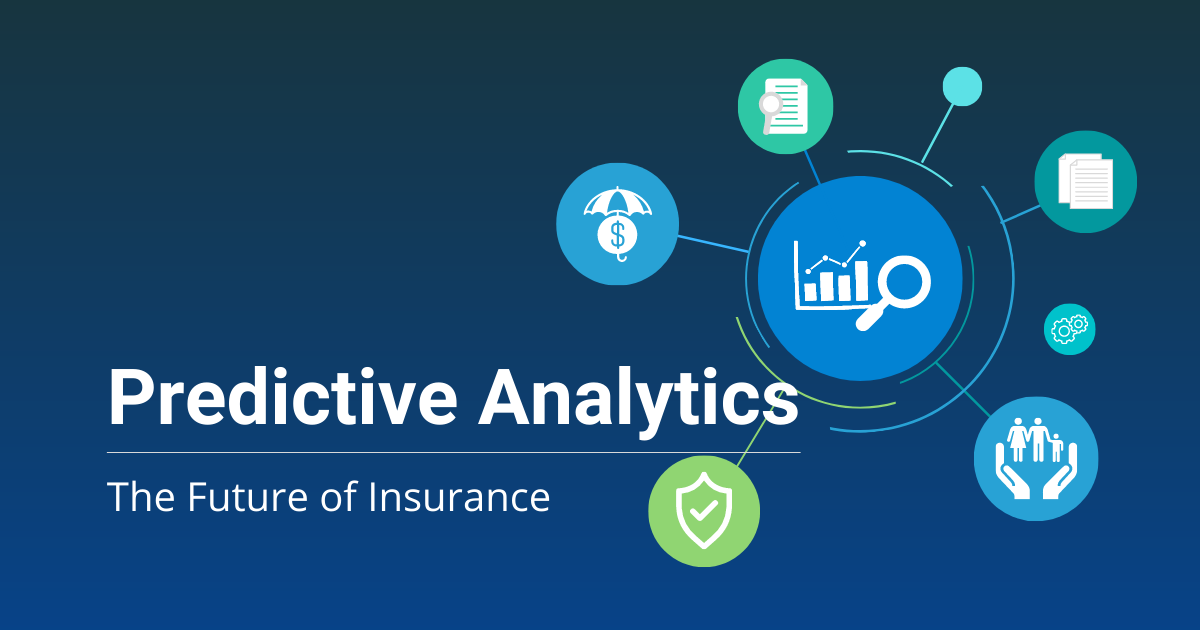The insurance industry has been undergoing a significant transformation in recent years, largely driven by the rise of digital technologies and advanced analytics. From data-driven customer insights to automating claims processes, digital tools and analytics are reshaping how insurers operate and deliver services. This article delves into the various ways in which digital and analytics are revolutionizing the insurance sector, and how companies can leverage these innovations to stay competitive in an increasingly tech-driven landscape.
Table of Contents:
- Introduction
- The Role of Digital Transformation in Insurance
- Analytics: The Game Changer for Insurance Companies
- How Insurance Companies Are Leveraging Digital and Analytics
- Challenges Faced in Implementing Digital and Analytics in Insurance
- The Future of Digital and Analytics in the Insurance Industry
- Conclusion
- FAQ Section
- Detailed Table: Key Features and Specifications of Digital Tools for Insurance
1. Introduction
The insurance industry, once reliant on paper-based processes and traditional customer service models, is embracing digital transformation in a big way. Digital technologies like AI, machine learning, blockchain, and cloud computing are providing insurers with powerful tools to improve customer experiences, streamline operations, and better manage risks.
Analytics, on the other hand, plays a crucial role in extracting actionable insights from vast amounts of data. This data-driven approach allows insurers to make smarter decisions, predict customer behavior, and optimize pricing strategies.
This article explores how digital and analytics are reshaping the insurance landscape and why it’s essential for insurers to adopt these technologies in order to remain competitive in an ever-evolving market.
2. The Role of Digital Transformation in Insurance
The Shift Toward Digital
The insurance industry has been slow to adopt digital technologies compared to other sectors. However, in recent years, there has been a notable shift towards digitization, especially with the growing demands of tech-savvy consumers. Today’s policyholders expect a seamless, personalized, and efficient experience, which digital tools can provide.
Some key digital transformations in insurance include:
- Customer Engagement: Digital platforms, mobile apps, and chatbots allow insurers to provide more personalized interactions with customers. These technologies enable insurers to gather customer data in real time and offer customized solutions.
- Automation of Processes: Digital solutions are being used to automate underwriting, claims processing, and policy management, drastically reducing human error and improving efficiency.
- Smart Contracts & Blockchain: Blockchain technology is making insurance transactions more secure, transparent, and efficient. Smart contracts allow automatic execution of claims, reducing the need for manual intervention.
- Improved Risk Assessment: Digital tools like telematics and IoT (Internet of Things) devices are helping insurers better assess risk by providing real-time data on driving behaviors, health monitoring, and more.
Benefits of Digital Transformation in Insurance
- Efficiency Gains: By automating routine tasks and leveraging cloud computing, insurance companies can reduce operational costs and enhance efficiency.
- Improved Customer Experience: Digital touchpoints allow customers to interact with insurers at their convenience, ensuring higher satisfaction and retention rates.
- Better Risk Management: Real-time data analysis and advanced analytics help insurers assess and manage risks more effectively.
3. Analytics: The Game Changer for Insurance Companies
Analytics is at the core of the digital revolution in insurance. The industry has always relied on data to assess risk, but advances in analytics now allow insurers to go beyond basic historical data to predictive and prescriptive analytics.
Types of Analytics in Insurance
- Descriptive Analytics: This is the traditional form of analytics, where historical data is analyzed to understand past trends. For example, insurers may use descriptive analytics to identify which customer segments have the highest claims history.
- Predictive Analytics: Predictive analytics uses statistical models and machine learning algorithms to forecast future outcomes. In insurance, this can be used to predict the likelihood of a customer filing a claim or the probability of an accident happening in a certain area.
- Prescriptive Analytics: Prescriptive analytics takes predictive analytics a step further by recommending actions. For example, insurers might use prescriptive analytics to suggest personalized premium rates based on a customer’s risk profile or advise on preventive measures.
How Analytics Improves the Insurance Business
- Pricing Optimization: Insurers can use data-driven insights to create personalized pricing models. For instance, a policyholder with a low risk profile may benefit from lower premiums, while those with higher risks may face adjusted premiums based on their behavior or circumstances.
- Fraud Detection: Analytics tools can sift through vast amounts of data to identify patterns indicative of fraudulent activity. Machine learning algorithms can detect unusual behavior, such as multiple claims made under different names, flagging them for further investigation.
- Claims Management: Analytics is helping to streamline claims management by quickly identifying fraudulent claims and expediting the approval process for legitimate ones. This leads to faster settlement times and better customer satisfaction.
- Customer Insights: Advanced analytics enables insurers to better understand their customers’ preferences, behaviors, and needs. This allows for more targeted marketing, better risk segmentation, and the ability to offer products tailored to each individual customer.
4. How Insurance Companies Are Leveraging Digital and Analytics
Several insurance companies have already begun to integrate digital tools and analytics into their operations. Below are some notable examples:
1. Automated Claims Processing at Lemonade Insurance
Lemonade, an insurtech company, uses artificial intelligence to streamline its claims process. When a customer files a claim, Lemonade’s AI-powered system can process the claim and approve or deny it in just seconds. This automation drastically reduces administrative costs and improves response times.
2. Telematics for Personalized Auto Insurance: Progressive Insurance
Progressive Insurance uses telematics through its Snapshot program, which collects data about a driver’s behavior, such as speed, braking patterns, and time of day. This data is used to offer personalized auto insurance premiums, rewarding safe drivers with discounts.
3. AI-Driven Underwriting: MetLife
MetLife uses artificial intelligence to automate its underwriting process, reducing the time required to assess a customer’s risk. The AI system can analyze vast amounts of data in seconds, allowing for faster decision-making and improving operational efficiency.
4. Blockchain for Claims: B3i Blockchain Initiative
The B3i Blockchain Initiative, a collaborative effort by major global insurers, aims to leverage blockchain technology to improve transparency and efficiency in claims processing. By creating a decentralized platform, insurers can securely exchange data and process claims faster.
5. Challenges Faced in Implementing Digital and Analytics in Insurance
While the potential benefits of digital and analytics are clear, there are still several challenges insurers face in fully embracing these technologies:
- Data Privacy and Security Concerns: Insurers must protect vast amounts of sensitive customer data, which raises concerns about cybersecurity. Ensuring compliance with regulations like GDPR and CCPA is also a challenge.
- Legacy Systems: Many insurers are still using outdated legacy systems that are not easily compatible with modern digital tools. Migrating to new technologies can be costly and time-consuming.
- Talent Shortage: There is a growing demand for data scientists, AI specialists, and cybersecurity experts in the insurance industry. Finding and retaining the right talent can be a challenge for many companies.
- Resistance to Change: Employees and stakeholders in traditional insurance companies may resist digital transformation due to a lack of familiarity with new technologies or fear of job displacement.
6. The Future of Digital and Analytics in the Insurance Industry
As technology continues to evolve, the insurance industry is likely to experience even more significant changes. Here are a few trends to watch for:
- AI and Machine Learning: AI will continue to play a major role in automating claims processing, underwriting, and customer service. Machine learning algorithms will become more advanced, improving decision-making and personalization.
- IoT and Wearables: As IoT devices become more widespread, insurers will have access to more real-time data, allowing them to offer hyper-personalized policies and adjust premiums based on individual behaviors.
- Blockchain and Smart Contracts: Blockchain technology will further streamline claims processing and enhance transparency. Smart contracts will allow for automated, self-executing policies, reducing the need for intermediaries.
- Telematics in Health Insurance: Health insurance companies will increasingly use wearable devices to monitor the health metrics of their policyholders. This data will be used to create more accurate risk profiles and offer discounts to those who maintain a healthy lifestyle.
7. Conclusion
The digital and analytics revolution is well underway in the insurance industry, and companies that fail to adapt risk falling behind. By embracing digital tools and leveraging the power of analytics, insurers can improve operational efficiency, offer personalized services, and manage risk more effectively. However, there are challenges to overcome, such as data privacy concerns, legacy systems, and talent shortages.
As the industry continues to evolve, insurers must remain agile and invest in new technologies to stay ahead of the curve. The future of insurance is digital, and analytics will be at the heart of this transformation.
8. FAQ Section
What is the role of digital transformation in the insurance industry?
Digital transformation in the insurance industry involves the adoption of new technologies such as AI, machine learning, blockchain, and cloud computing. These technologies help improve customer experiences, streamline operations, and enhance risk management.
How does analytics improve insurance operations?
Analytics allows insurers to extract actionable insights from data. It helps in pricing optimization, fraud detection, claims management, and customer insights, ultimately improving operational efficiency and decision-making.
What are the challenges in adopting digital tools in insurance?
Challenges include data privacy and security concerns, integration with legacy systems, talent shortages, and resistance to change from employees or stakeholders.
How is AI used in the insurance industry?
AI is used for automating underwriting, claims processing, and customer service. It also enables insurers to personalize pricing and detect fraudulent claims.




